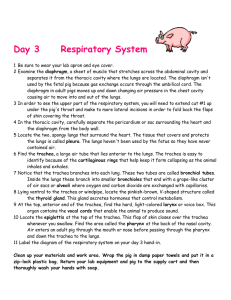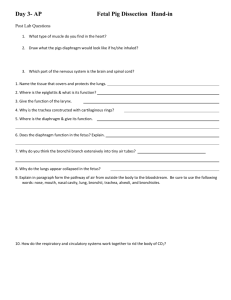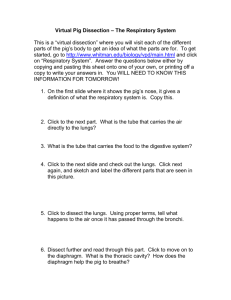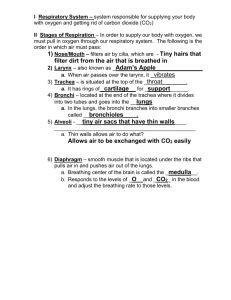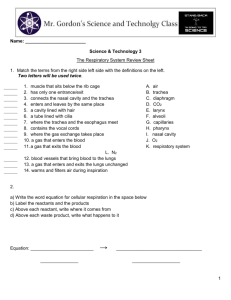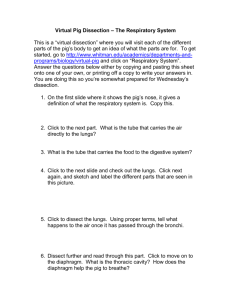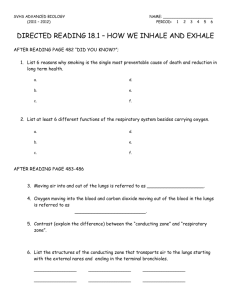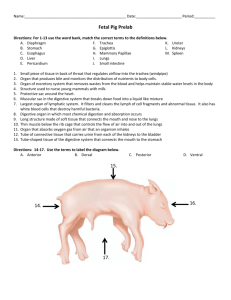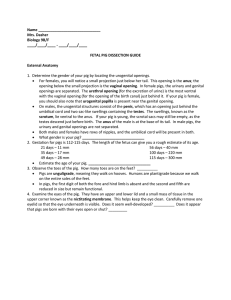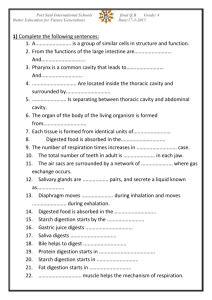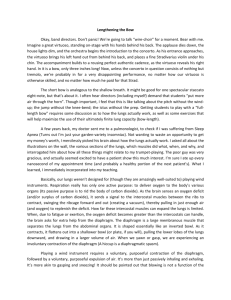Day 3 Respiratory System & Circulatory System Respiratory System
advertisement
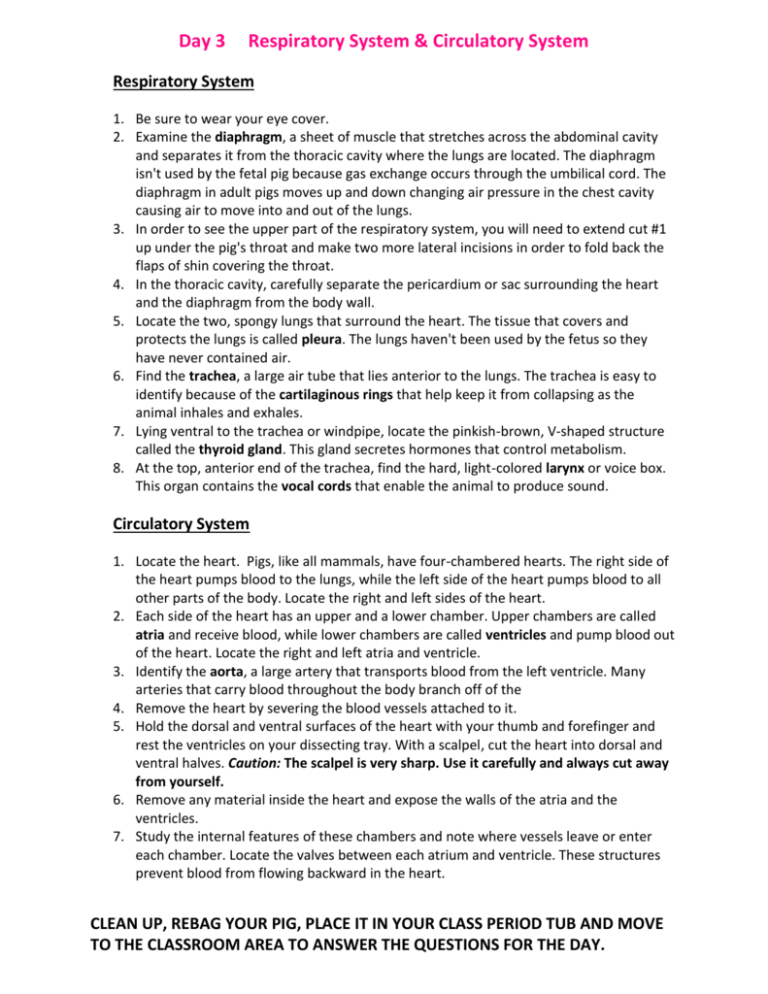
Day 3 Respiratory System & Circulatory System Respiratory System 1. Be sure to wear your eye cover. 2. Examine the diaphragm, a sheet of muscle that stretches across the abdominal cavity and separates it from the thoracic cavity where the lungs are located. The diaphragm isn't used by the fetal pig because gas exchange occurs through the umbilical cord. The diaphragm in adult pigs moves up and down changing air pressure in the chest cavity causing air to move into and out of the lungs. 3. In order to see the upper part of the respiratory system, you will need to extend cut #1 up under the pig's throat and make two more lateral incisions in order to fold back the flaps of shin covering the throat. 4. In the thoracic cavity, carefully separate the pericardium or sac surrounding the heart and the diaphragm from the body wall. 5. Locate the two, spongy lungs that surround the heart. The tissue that covers and protects the lungs is called pleura. The lungs haven't been used by the fetus so they have never contained air. 6. Find the trachea, a large air tube that lies anterior to the lungs. The trachea is easy to identify because of the cartilaginous rings that help keep it from collapsing as the animal inhales and exhales. 7. Lying ventral to the trachea or windpipe, locate the pinkish-brown, V-shaped structure called the thyroid gland. This gland secretes hormones that control metabolism. 8. At the top, anterior end of the trachea, find the hard, light-colored larynx or voice box. This organ contains the vocal cords that enable the animal to produce sound. Circulatory System 1. Locate the heart. Pigs, like all mammals, have four-chambered hearts. The right side of the heart pumps blood to the lungs, while the left side of the heart pumps blood to all other parts of the body. Locate the right and left sides of the heart. 2. Each side of the heart has an upper and a lower chamber. Upper chambers are called atria and receive blood, while lower chambers are called ventricles and pump blood out of the heart. Locate the right and left atria and ventricle. 3. Identify the aorta, a large artery that transports blood from the left ventricle. Many arteries that carry blood throughout the body branch off of the 4. Remove the heart by severing the blood vessels attached to it. 5. Hold the dorsal and ventral surfaces of the heart with your thumb and forefinger and rest the ventricles on your dissecting tray. With a scalpel, cut the heart into dorsal and ventral halves. Caution: The scalpel is very sharp. Use it carefully and always cut away from yourself. 6. Remove any material inside the heart and expose the walls of the atria and the ventricles. 7. Study the internal features of these chambers and note where vessels leave or enter each chamber. Locate the valves between each atrium and ventricle. These structures prevent blood from flowing backward in the heart. CLEAN UP, REBAG YOUR PIG, PLACE IT IN YOUR CLASS PERIOD TUB AND MOVE TO THE CLASSROOM AREA TO ANSWER THE QUESTIONS FOR THE DAY.
